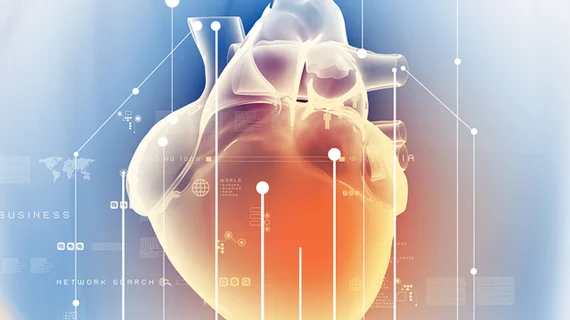Australian researchers have developed a novel cardiovascular MRI protocol as an option to the invasive gold standard, endomyocardial biopsy, for monitoring heart-transplant patients at risk of suffering organ rejection.
The work was carried out at St. Vincent’s Hospital and Victor Chang Cardiac Research Institute, both in Sydney, and is described in a study published online May 27 in Circulation.
Co-lead authors Chris Anthony and Muhammad Imran, senior author Andrew Jabbour and colleagues innovated their tweak of cardiovascular MRI (CMR) using 401 CMR imaging studies and 354 endomyocardial biopsy (EMB).
To compare the two, the researchers randomized 40 heart-transplant recipients into EMB and CMR groups, then surveilled them over almost a year.
The team found their experimental multiparametric CMR scan protocols—which they’ve dubbed a “virtual biopsy”—better than both T1 and T2 parametric CMR alone at detecting acute cardiac allograft rejection.
More crucially, they found their imaging test no less accurate or reliable than the conventional biopsy.
What’s more, among seven CMR patients and eight EMB patients with high-grade organ rejection, rates were significantly lower in the CMR subgroup for hospitalization and infection. Of note, these cohorts were closely similar in immunosuppression requirements, kidney function and mortality.
Meanwhile, only 6% of patients randomized into the CMR arm also received EMB, “representing a 94% reduction in the requirement for EMB-based surveillance,” the authors report.
“A noninvasive CMR-based surveillance strategy for acute cardiac allograft rejection in the first year after orthotopic heart transplantation is feasible compared with EMB-based surveillance,” the authors conclude.
In a news item posted May 29 by the Chang institute, Jabbour says he expects the work to help improve care and outcomes for heart-transplant patients around the world.
“It’s essential that we can monitor these patients closely and with a high degree of accuracy,” Jabbour adds. “Now we have a new tool that can do that without the need for a highly invasive procedure … This new virtual biopsy takes less time, is non-invasive, more cost-effective, uses no radiation or contrast agents, and most importantly patients much prefer it.”
More Coverage of Cardiovascular Imaging:
VIDEO: Contrast media shortage impacting cardiac CT imaging
FDA announces Class I recall of 4,800 imaging catheters due to risk of vascular injury
VIDEO: The new role of cardiac CT under the 2021 chest pain evaluation guidelines
CT-FFR before TAVR improves detection of coronary artery disease, limits invasive imaging exams
Reference:
- Chris Anthony, Muhammad Imran, et al., “Cardiovascular Magnetic Resonance for Rejection Surveillance After Cardiac Transplantation.” Circulation, May 27, 2022. Study abstract here.

